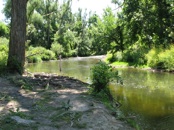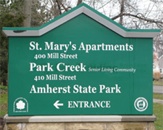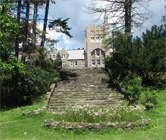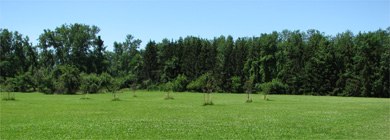favicongohere




AMHERST STATE PARK


Please use the navigation menu at bottom the Page
MenuGoHere
Arboretum Plan
TOWN OF AMHERST ARBORETUM
History
January 7, 2009, a resolution was put forth to the Amherst Town Board (Resolution 2008-54, Councilmember Dan Ward) to investigate the concept of creating a municipal arboretum. The Resolution was subsequently sent to the Amherst Conservation Advisory Council. September 2, 2008 a response from the ACAC was presented to the Amherst Town Board in support of an arboretum to be located at Amherst State Park. It was the belief of the ACAC that Amherst State Park already had a variety of trees, shrubs and other flora in addition to several unique ecological habitats that would allow for the development of an arboretum without changing the historic aspect of the park.
In addition, this site was chosen because it is centrally located within the Town and Village and is a suitable environment from which to develop the Arboretum, which by definition is, “A place where an extensive variety of woody plants are cultivated for scientific, educational, and ornamental purposes.” A more pragmatic reason is cost effectiveness.
As provided in the ASP Master Plan and in accordance with the January 2000 Cooperative Operations and Maintenance Agreement with the State of New York, the Town is responsible for the development, operation, maintenance, and security of the park. The agreement also stipulates that the property will be used for “passive, low intensity recreational, educational and conservation purposes”. The arboretum concept will provide compliance with these stipulations.
Purpose
The purpose of an Amherst Arboretum is to educate visitors about the natural, historic, and scenic resources of Amherst State Park, conserve species of flora and associated wildlife, provide a focus on native plant species while mitigating invasive plant species, and to enhance the quality of life for Amherst and Williamsville residents. Appropriate signage for identification of plant, mammal, and bird species found within the park, the provision of historical facts regarding the property, and general educational information, are an important and necessary part of the arboretum concept.
Vision
The arboretum is envisioned as consisting of several distinct areas of interest.
Each individual area will be identified by informational signage that will provide appropriate educational photos and verbiage describing features of the environmental habitat, specific plant, animal and bird identifications, areas of new plantings, and the historical significance of certain park features such as the Orchard Area. The goal is to enhance some of these areas through new landscaping, restoration of historic features, and conservation of the natural areas including associated flora and fauna. Much of this project will result in minimal impact to the affected areas. Any proposed trails and paths, or trail improvements, will be in compliance with the Amherst State Park Master Plan.
In addition, special emphasis will be put on Ellicott Creek bank restoration and stabilization through the use of proven environmental techniques including the planting of flora, trees, and shrubs known to help restore and stabilize stream banks and riparian areas. Preservation of this riparian corridor along Ellicott Creek carries high priority as it serves as a significant migratory bird habitat.
Invasive plant species are an increasing concern in Amherst State Park. Again, in accordance with the Amherst State Park Master Plan, it is recommended to use an Integrated Pest Management (IPM) program for the protection of public health and /or ecological health of the park’s natural environment. An experimental project in conjunction with the NYSDEC and NYS Fish and Wildlife Service was started in the summer of 2010 to begin eradication of Japanese Knotweed. The plant has heavily infested the south and east bank of Ellicott Creek and the experimental eradication program is planned to continue for three years.






